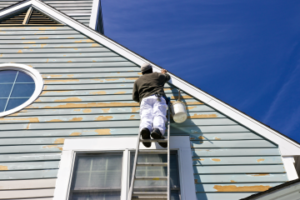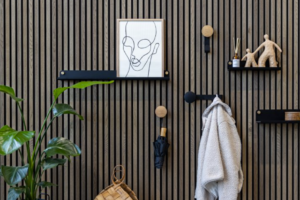
DIY projects are creative and often inexpensive ways to improve your home. With your own materials and skills, you can achieve results similar to professional creatives and repairmen. The key to success lies in creating long-term home improvement plans that prioritize projects in terms of how involved each project is. That will make it easier for you to determine if you can do something on your own or if you need a professional to step in. If you don’t do this for a project, you’re more likely to run into accidents. Home improvement injuries that required an ER visit amounted to 290,000 in 2020 alone, when many people were getting into DIY projects. According to Dr. Erik Strukel, Sharp Grossmont Hospital Care Clinic’s medical director, eye injuries are among the most common DIY accidents. He emphasized proper preparation to reduce such risks and make projects more enjoyable. After all, harming your eye with abrasions, toxic chemicals, or punctures can lead to discomfort—or even vision loss—that may hinder your future DIY plans.
With that said, here are some eye safety tips to keep in mind:
Read and follow labels
You’ll surely use different materials and tools to achieve your desired results for certain DIY projects. Some common ones include power tools—such as hand drills—and chemicals like borax. The first step in eye safety is knowing how to use and handle products and equipment by carefully reading and following the labels they come with.
For instance, reading instructions on properly attaching a drill bit ensures that this won’t fly off and possibly hit your eyes when you use a drill. On the other hand, being aware of borax’s effect on the eyes—including irritation—will let you know how this should be handled and stored so it doesn’t enter your eyes.
Wear protective eyewear
If you’re working on an outdoor project, you can still get injuries despite handling things with proper knowledge. The sun’s glare, for example, may blind you and cause you to trip while holding a sharp tool. You can avoid such incidents by wearing polarized sunglasses. These block glare to provide better visual acuity, which is why even drivers and athletes use it as a safety precaution. The large lenses on polarized models like the Ray-Ban RB2132 can thus come in handy when constructing a patio or backyard fire pit.
Regardless of whether you’re outdoors or indoors, though, you must protect your eyes from cuts, punctures, and infections. Be sure to wear safety goggles specifically designed to prevent eye injuries from things like splashed paint or welding sparks. If you wear glasses, don’t worry: you can easily get prescription safety glasses from brands like Oakley and Wiley X that all meet or even exceed OSHA safety standards. Try to get a pair with side shields to prevent the smallest particles from entering and irritating your eyes.
Keep a clean and tidy working environment
A messy workspace increases your chances of eye injuries. For instance, stacking multiple tools on a high shelf can make them topple over and potentially hit your eyes. They can also cause infections since the most common foreign objectsthat can enter them include dirt, sand, sawdust, and glass shards due to wind, falling objects, and tool accidents. Frantically looking for something on a dirty table can result in any of the above debris hitting your eyes, which can cause bleeding in severe cases.
So, keep your working environment tidy by placing items back in their proper places. Power tools should be unplugged when not in use and kept away from the floor to prevent tripping. Finally, dust and wipe your table regularly to eliminate the smallest particles that can puncture your eyeballs.
Wash your hands before touching your face
You may touch your eyes to remove hair or wipe sweat out of habit. Using dirty hands contaminated with chemicals, small particles, and bacteria will surely result in inflammation and conditions like pink eye. Ensure your hands are always clean before they come in contact with your face—especially after handling unsanitary tools or dangerous chemicals.
However, don’t use just anything to wash your hands. Instead, be sure to use a dedicated antibacterial hand soap. One brand you can have at the nearest sink to your work area is Dial: its antibacterial foaming hand soap can get rid of 99.99% of common germs and bacteria found in households. Just be sure to lather your hands for at least 20 seconds per wash or as long as two “Happy Birthday” songs. In that time, scrub under your nails, between your fingers, and on the backs and sides of your hands.
Doing DIY projects with proper preparation, care, and knowledge reduces your risk of incurring eye injuries that can cause permanent damage. Keep these tips in mind the next time you embark on a home improvement activity!







